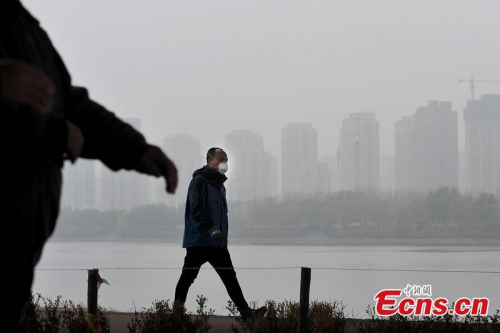PM0.3 more hazardous, unblockable
Ecns.cn, November 24, 2015 Adjust font size:
 |
|
A man walks on smog-enveloped road in Shenyang, capital of northeast China's Liaoning Province, Nov. 11, 2015. [Photo/CNS] |
The Guangzhou Daily on Thursday aroused public attention regarding PM0.3, fine particles included in PM2.5.
The term particulate matter 2.5 (PM2.5), refers to tiny particles or droplets in the air that are two and one half microns or less in width. And it can be subdivided into PM0.3, particles that are 0.3 microns or less in width and PM2.5 in narrow sense, or particles measuring 0.3 to 2.5 microns in width.
It is well known that PM2.5 particles are considered dangerous because they are often composed of substances like heavy metals that are very toxic and are minute enough to travel deep into human lungs.
But the public may miss that PM0.3 particularly penetrate deep of respiratory system while particles that are 0.1 microns or less in width even pass into the blood circulation and disperse throughout the body, damaging blood vessels and the brain, the newspaper said, citing recent research reports.
A website under China Meteorological Administration said most masks and purifiers are only effective against PM 2.5 in narrow sense.
Wu Dui, a professor at Jinan University, admitted that almost no mask can protect people from such fine particles like PM0.3, while particles that are one micron or less in width account for 80 to 90 percent of PM2.5.
The only way is to reduce emissions and pollution, it was added.